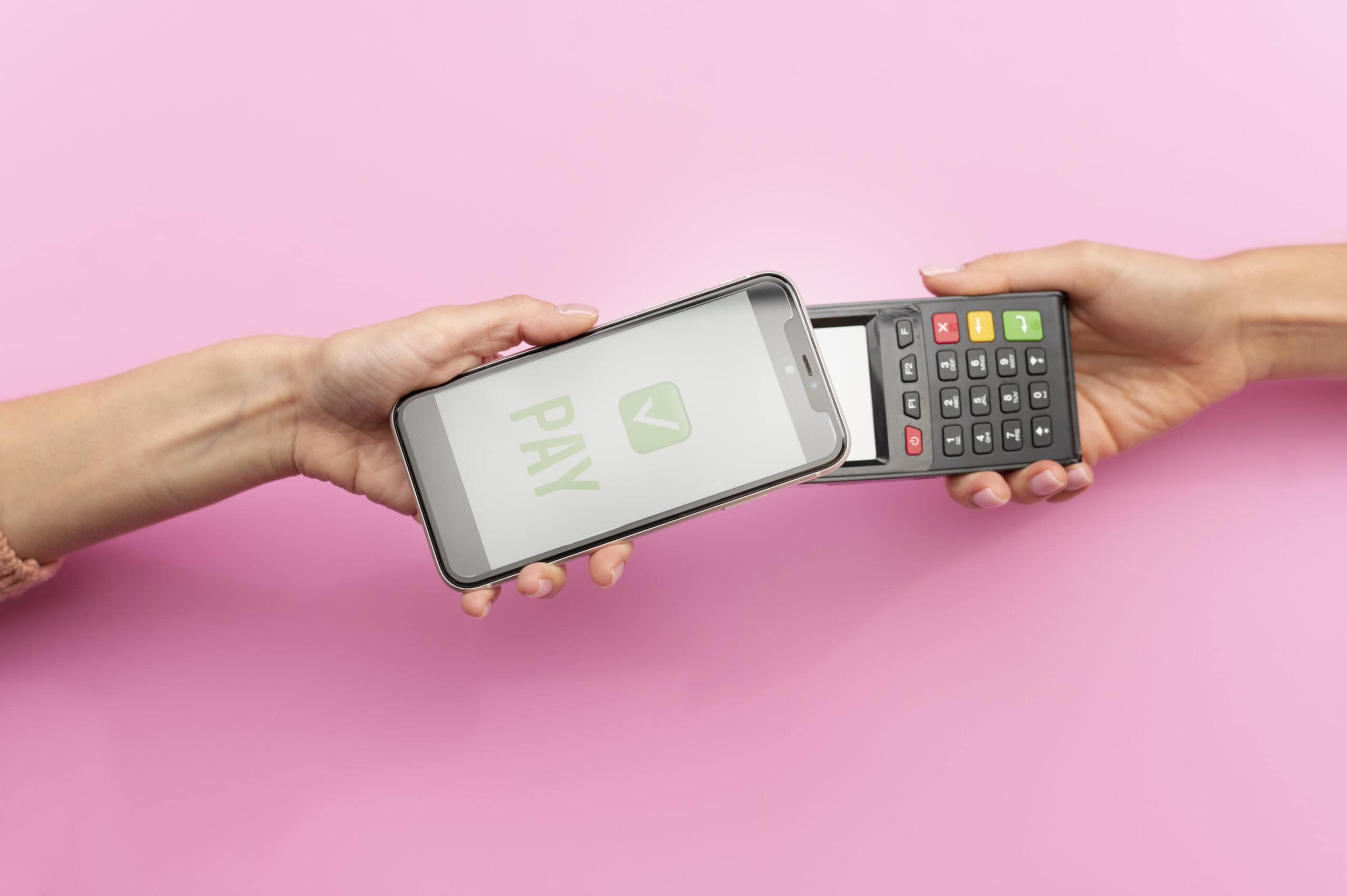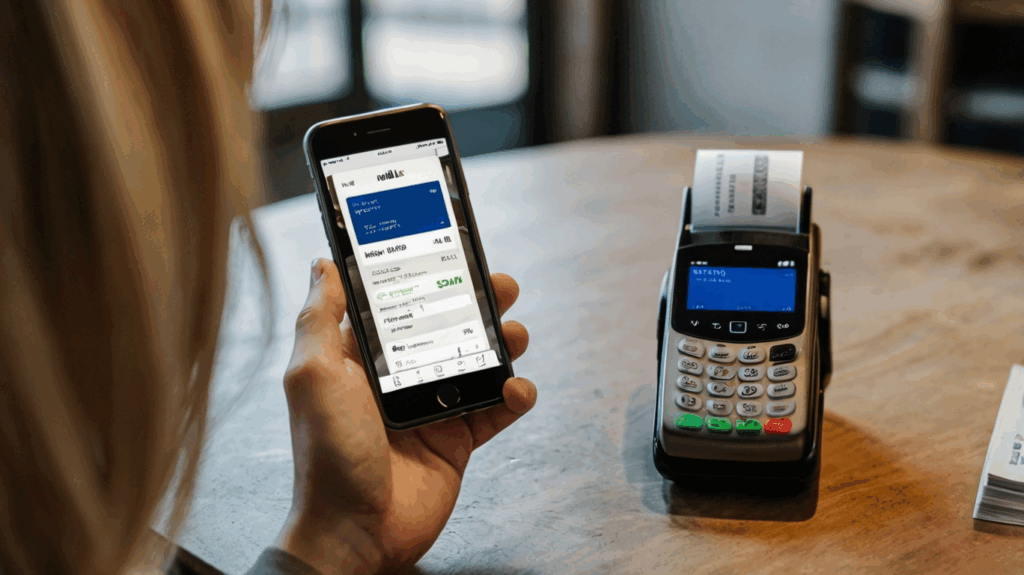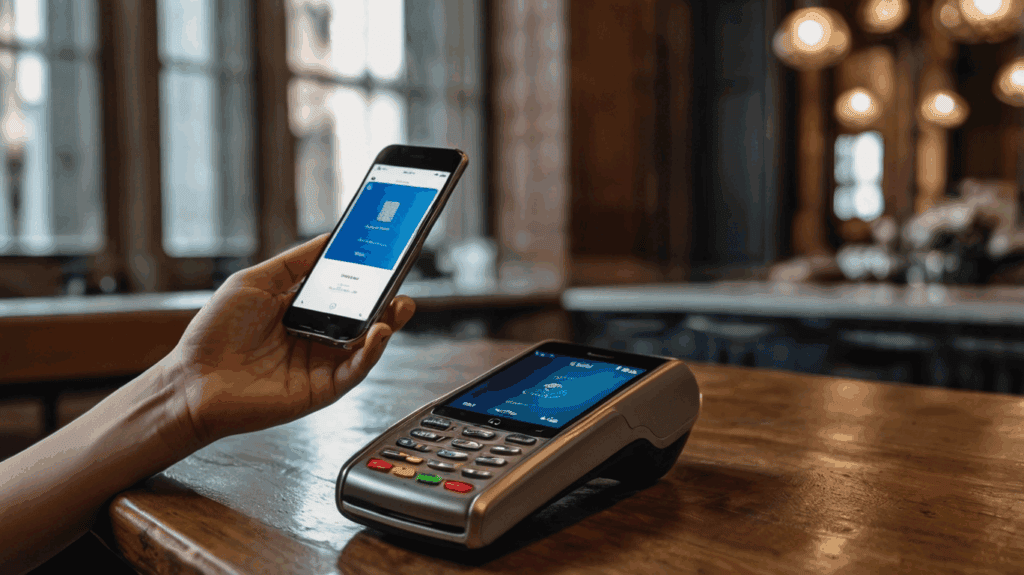
By Pamela Thompson August 15, 2025
As retailers continue to offer customers a faster and more easily accessible payment methods, today’s society is turning towards mobile wallet for more instantaneous, secure, and touchless transactions such as Apple Pay, Google Wallet, and Samsung Pay. These digital payment technologies securely save the card information on a mobile phone or wearable device, so the consumer can make a quick tap on their phone rather than searching their purse or pocket for a card or cash to pay.
This trend represents a unique opportunity for footwear stores. Trying on many different styles and sizes is part of the fun of shoe shopping, but a smooth checkout experience can help the customer feel like the actual purchase is smooth and easy. Mobile wallet is a technology that allows footwear retailers to reduce wait time, increase customer satisfaction, and create a motivation for a repeat visit. It’s not only about staying on trend; it’s about providing a shopping experience that fits as easily as a pair of shoes.
In this post, we’ll discuss ways to encourage adoption, how they benefit customers and retailers, and some practical tips for integrating them with your payment processor. Done correctly, it converts the checkout counter into a valuable vehicle for loyalty and sales.
Understanding Mobile Wallet and Consumer Trends

A mobile wallet refers to secure apps, like Apple Pay, Google Wallet, or Samsung Pay, that manage payment card information and other credentials on a smartphone or wearable devices. Customers are able to authorize payment through biometric authentication or a passcode and make the payment by tapping the device against the contactless payment terminal.
Mobile wallet usage in retail has increased sharply in recent years with an emphasis towards speedier, safer and hygienic forms of payment. Tap-to-pay also appears promising for footwear retailers as their top customers include young and more tech-savvy customers who have a preference for convenience or speedy transactions.
Benefits of Mobile Wallet Adoption for Footwear Stores
If footwear retailers accept payments via mobile wallets, they can reap significant benefits that will affect customer experience and business performance.
1. Faster Checkouts and Reduced Queues
Footwear shops are crowded with individuals, particularly throughout sales or brand-new launch period. As many consumers may value a more contactless experience, mobile wallets offer faster transactions where customers can tap and go instead of handling cash or inserting cards. It not only decreases the time you spend in line, it improves store traffic.
2. Enhanced Customer Satisfaction
The expectation of consumers to check out more seamlessly is also growing. Footwear stores now meet these expectations by offering mobile wallet compatibility, which accounts for a better satisfaction and prompts their customers to come back again. Simply paying with a smartphone or smartwatch brings in that modern and tech-forward side of the brand.
3. Improved Security and Trust
They are far more secure than traditional magnetic stripe or chip-based payment as these mobile wallets use technologies like tokenization and biometric authentication. A proficient payment processor keeps the data encrypted and comes with a high standard to maintain the compliance of their payment for security.
4. Competitive Advantage in Retail
By adopting mobile wallets early and promoting their use, footwear retailers can differentiate themselves in a competitive market. It signals innovation and a willingness to meet evolving consumer needs, which can attract younger demographics and brand-loyal customers.

Strategies to Increase Mobile Wallet Adoption
Motivating consumers to accept mobile wallets at shoe stores will require technological advancements, employee involvement and customer awareness. Here is a list of approaches that can encourage adoption.
Upgrade POS Systems for Contactless Payments
First, make sure your point-of-sale terminals accept NFC so customers can do tap-to-pay. Other considerations for current systems is that payment processing needs to be integrated with inventory control, so that purchases reduce stock in real-time. This helps mobile wallet payments, as well as simplifying store operations.

Train Staff to Promote Mobile Wallet Usage
Your team is a key part of the adoption. Equip them with some scripts that are easy to understand and friendly to offer mobile wallet as a payment method during checkout. For example: “Would you like to try paying with your phone or watch today? It’s faster and secure.” Consider offering small incentives for staff who successfully encourage customers to use contactless transactions.
Customer Awareness Campaigns
Many customers do not know whether your store takes mobile wallets. Promote the “Tap to Pay” feature, such as in-store signage, counter displays and digital screens. Take advantage of fun social media posts that highlight the features and security of mobile wallets. You can also offer customers confidence to try it out with step-by-step set up instructions available online and/or printed.

Incentivize First-Time Mobile Wallet Payments
Reward a customer’s first use of a mobile wallet with incentives. The incentive could be a small discount, bonus of loyalty points or even a free accessory for shoe-cleaning. These incentives both stimulate first time use and increase the propensity to re-use.
Integrate Loyalty and Rewards with Mobile Wallets
One of the most powerful adoption boosters is linking loyalty programmes to mobile wallets. Enable customers to store digital loyalty cards in their Apple Wallet or Google Wallet, making it easy to earn and redeem points without carrying a physical card. Promote this convenience through in-store promotions and at checkout, ensuring customers know they can enjoy rewards seamlessly through their preferred payment method.
Using these techniques, shoe retailers can develop an effortless, engaging, and satisfying experience for mobile shoppers—one that meets consumer expectations, while branding the shoe store as an innovative leader in shopping technology.
Conclusion
Mobile wallets represent more than just a payment trend; they are changing the way customers shop, pay and engage with footwear brands. Retailers and customers alike clearly benefit, from faster transactions and shorter waits to greater loyalty integration. We have examined tried-and-true tactics to increase adoption, including the integration of better POS systems, and rewarding first-time adopters, and how wearable technology and immersive shopping technology may pave new paths. For shoe retailers, taking action today means addressing the current need for contactless, seamless shopping as well as tomorrow’s innovations and expectations. Integrating mobile wallet payments will create a seamless shopping experience.
Frequently Asked Questions
1. What is a mobile wallet and how does it work in footwear stores?
A mobile wallet is a digital version of a payment card stored on a smartphone or wearable. In footwear stores, customers simply tap their device on an NFC-enabled terminal to complete a purchase.
2. Why should footwear retailers accept mobile wallets?
Accepting mobile wallets offers faster checkouts, improved customer satisfaction, and integration with loyalty program; key advantages in a competitive retail market.
3. Which mobile wallets are most popular among shoe shoppers?
Apple Pay, Google Wallet, and Samsung Pay are widely used by footwear customers, offering secure and convenient payment options.
4. How can footwear retailers encourage mobile wallet usage?
Retailers can upgrade POS systems, train staff to suggest mobile wallet payments, run awareness campaigns, and offer first-time user incentives.
5. Will mobile wallets replace traditional payments in footwear retail?
While cash and cards will remain for now, mobile wallets are expected to become the preferred payment method, especially as wearable payments and mobile-only checkouts grow in popularity.
Leave a Reply